Role of the uS9/yS16 C-terminal tail in translation initiation and elongation in Saccharomyces cerevisiae
- PMID: 30481328
- PMCID: PMC6344880
- DOI: 10.1093/nar/gky1180
Role of the uS9/yS16 C-terminal tail in translation initiation and elongation in Saccharomyces cerevisiae
Abstract
The small ribosomal subunit protein uS9 (formerly called rpS16 in Saccharomyces cerevisiae), has a long protruding C-terminal tail (CTT) that extends towards the mRNA cleft of the ribosome. The last C-terminal residue of uS9 is an invariably conserved, positively charged Arg that is believed to enhance interaction of the negatively charged initiator tRNA with the ribosome when the tRNA is base-paired to the AUG codon in the P-site. In order to more fully characterize the role of the uS9 CTT in eukaryotic translation, we tested how truncations, extensions and substitutions within the CTT affect initiation and elongation processes in Saccharomyces cerevisiae. We found that uS9 C-terminal residues are critical for efficient recruitment of the eIF2•GTP•Met-tRNAiMet ternary complex to the ribosome and for its proper response to the presence of an AUG codon in the P-site during the scanning phase of initiation. These residues also regulate hydrolysis of the GTP in the eIF2•GTP•Met-tRNAiMet complex to GDP and Pi. In addition, our data show that uS9 CTT modulates elongation fidelity. Therefore, we propose that uS9 CTT is critical for proper control of the complex interplay of events surrounding accommodation of initiator and elongator tRNAs in the P- and A-sites of the ribosome.
Figures
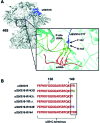
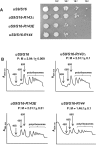
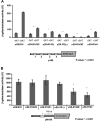
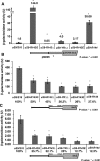
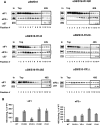

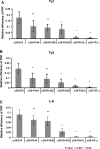
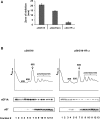

Similar articles
-
Yeast initiator tRNA identity elements cooperate to influence multiple steps of translation initiation.RNA. 2006 May;12(5):751-64. doi: 10.1261/rna.2263906. Epub 2006 Mar 24. RNA. 2006. PMID: 16565414 Free PMC article.
-
Enhanced eIF1 binding to the 40S ribosome impedes conformational rearrangements of the preinitiation complex and elevates initiation accuracy.RNA. 2014 Feb;20(2):150-67. doi: 10.1261/rna.042069.113. Epub 2013 Dec 13. RNA. 2014. PMID: 24335188 Free PMC article.
-
β-Hairpin loop of eukaryotic initiation factor 1 (eIF1) mediates 40 S ribosome binding to regulate initiator tRNA(Met) recruitment and accuracy of AUG selection in vivo.J Biol Chem. 2013 Sep 20;288(38):27546-27562. doi: 10.1074/jbc.M113.498642. Epub 2013 Jul 26. J Biol Chem. 2013. PMID: 23893413 Free PMC article.
-
A multifactor complex of eIF1, eIF2, eIF3, eIF5, and tRNA(i)Met promotes initiation complex assembly and couples GTP hydrolysis to AUG recognition.Cold Spring Harb Symp Quant Biol. 2001;66:403-15. doi: 10.1101/sqb.2001.66.403. Cold Spring Harb Symp Quant Biol. 2001. PMID: 12762043 Review. No abstract available.
-
The scanning mechanism of eukaryotic translation initiation.Annu Rev Biochem. 2014;83:779-812. doi: 10.1146/annurev-biochem-060713-035802. Epub 2014 Jan 29. Annu Rev Biochem. 2014. PMID: 24499181 Review.
Cited by
-
Cryo-EM study of an archaeal 30S initiation complex gives insights into evolution of translation initiation.Commun Biol. 2020 Feb 6;3(1):58. doi: 10.1038/s42003-020-0780-0. Commun Biol. 2020. PMID: 32029867 Free PMC article.
-
Communication between RACK1/Asc1 and uS3 (Rps3) is essential for RACK1/Asc1 function in yeast Saccharomyces cerevisiae.Gene. 2019 Jul 20;706:69-76. doi: 10.1016/j.gene.2019.04.087. Epub 2019 May 1. Gene. 2019. PMID: 31054365 Free PMC article.
-
Variations in transfer and ribosomal RNA epitranscriptomic status can adapt eukaryote translation to changing physiological and environmental conditions.RNA Biol. 2021 Oct 15;18(sup1):4-18. doi: 10.1080/15476286.2021.1931756. Epub 2021 Jun 23. RNA Biol. 2021. PMID: 34159889 Free PMC article. Review.
-
Structural basis of mitochondrial translation.Elife. 2020 Aug 19;9:e58362. doi: 10.7554/eLife.58362. Elife. 2020. PMID: 32812867 Free PMC article.
-
Recent Advances in Archaeal Translation Initiation.Front Microbiol. 2020 Sep 18;11:584152. doi: 10.3389/fmicb.2020.584152. eCollection 2020. Front Microbiol. 2020. PMID: 33072057 Free PMC article. Review.
References
Publication types
MeSH terms
Substances
Grants and funding
LinkOut - more resources
Full Text Sources
Molecular Biology Databases
Research Materials
Miscellaneous

